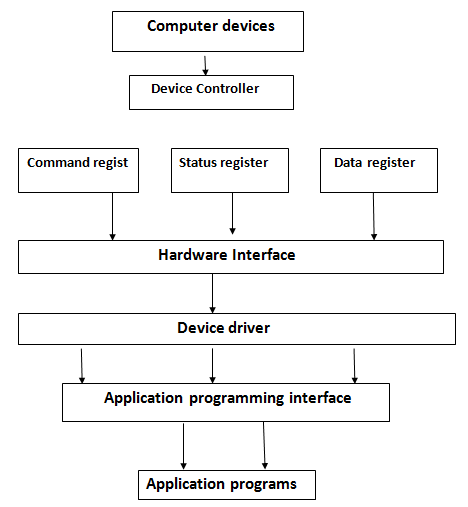Home »
Operating System
Device and Security Management in Operating System
Last Updated : December 30, 2025
What is Device Management?
Device Management is another important function of the operating system. Device management is responsible for managing all the hardware devices of the computer system. It may also include the management of the storage device as well as the management of all the input and output devices of the computer system. It is the responsibility of the operating system to keep track of the status of all the devices in the computer system. The status of any computing devices, internal or external may be either free or busy. If a device requested by a process is free at a specific instant of time, the operating system allocates it to the process.
An operating system manages the devices in a computer system with the help of device controllers and device drivers. Each device in the computer system is equipped with the help of device controller. For example, the various devices controllers in a computer system may be disk controller, printer controller, tape-drive controller and memory controller. All these devices controllers are connected with each other through a system bus. The device controllers are actually the hardware components that contains some buffers registers to store the data temporarily. The transfer of data between a running process and the various devices of the computer system is accomplished only through these devices controllers.
Important points of device management
- An operating system communicates with the devices controllers with the help of device drivers while allocating the device to the various processes running on the computer system.
- Device drivers are the software programs that are used by an operating system to control the functioning of various devices in a uniform manner.
- The device drivers may also be regarded as the system software programs acting as an intermediary between the processes and the devices controllers.
- The device controller used in the device management operation usually includes three different registers command, status, and data.
- The other major responsibility of the device management function is to implement the Application Programming Interface (API).
What is Security Management?
The security management function of an operating system helps in implementing mechanisms that secure and protect the computer system internally as well as externally.
Levels of Security Management
Therefore an operating system is responsible for securing the system at two different levels which are internal security and external security.
1. Internal Security
Internal security refers to the protection of activities of one process from the activities of another process. The term internal security may also be regarded as system protection. The internal security of the computer system also ensures the reliability of the computer system. There may be a number of process running in the computer systems use the concept of least privilege to implement internal security.
2. External Security
External security refers to the implementation of a mechanism for securing the data and programs stored in the computer system as well as the various resources of the computer system against unauthorized access. The term external security may also be regarded as system security. External security is particularly required when a computer system is either on a network or connected to the internet.

Advertisement
Advertisement